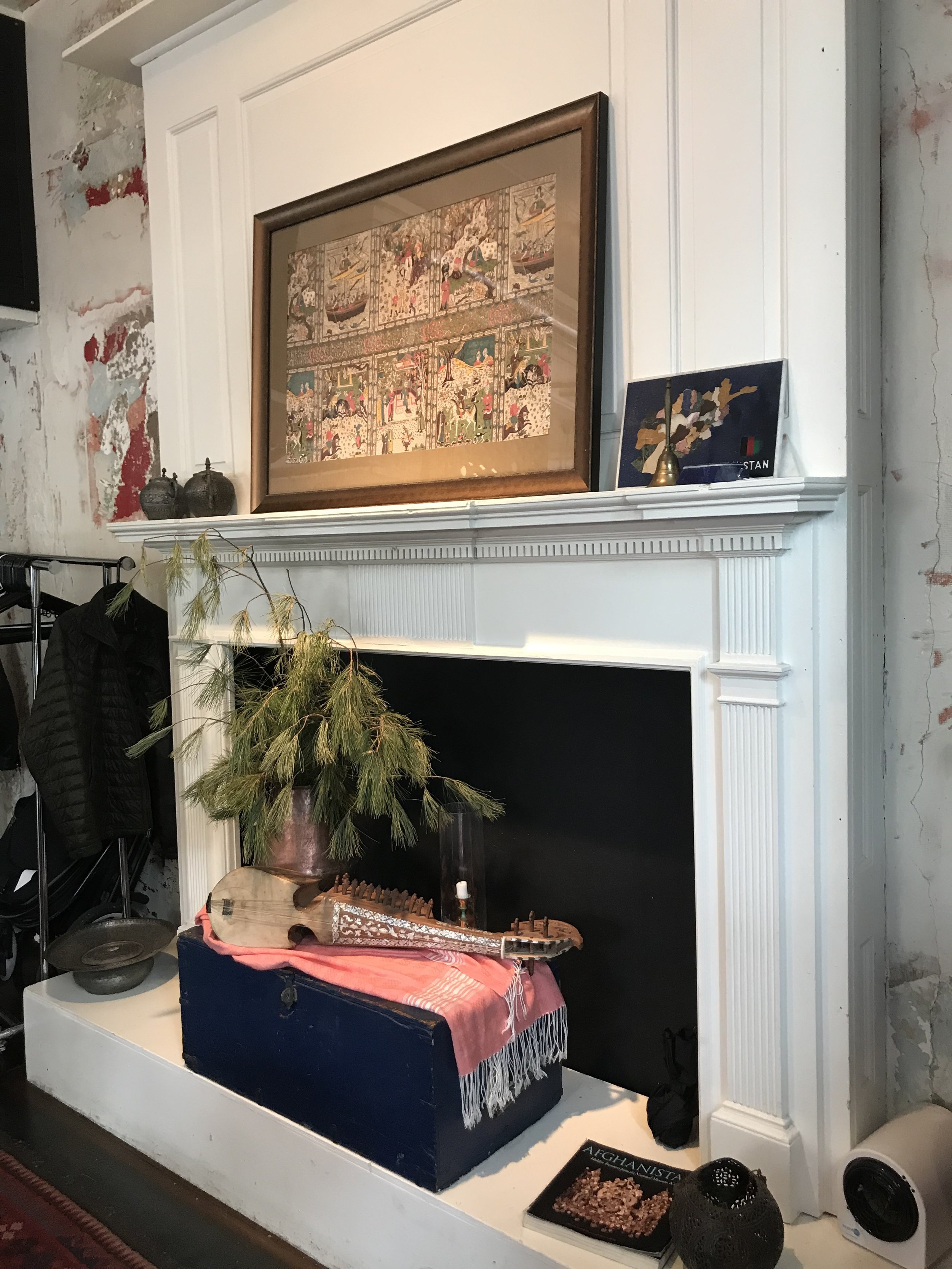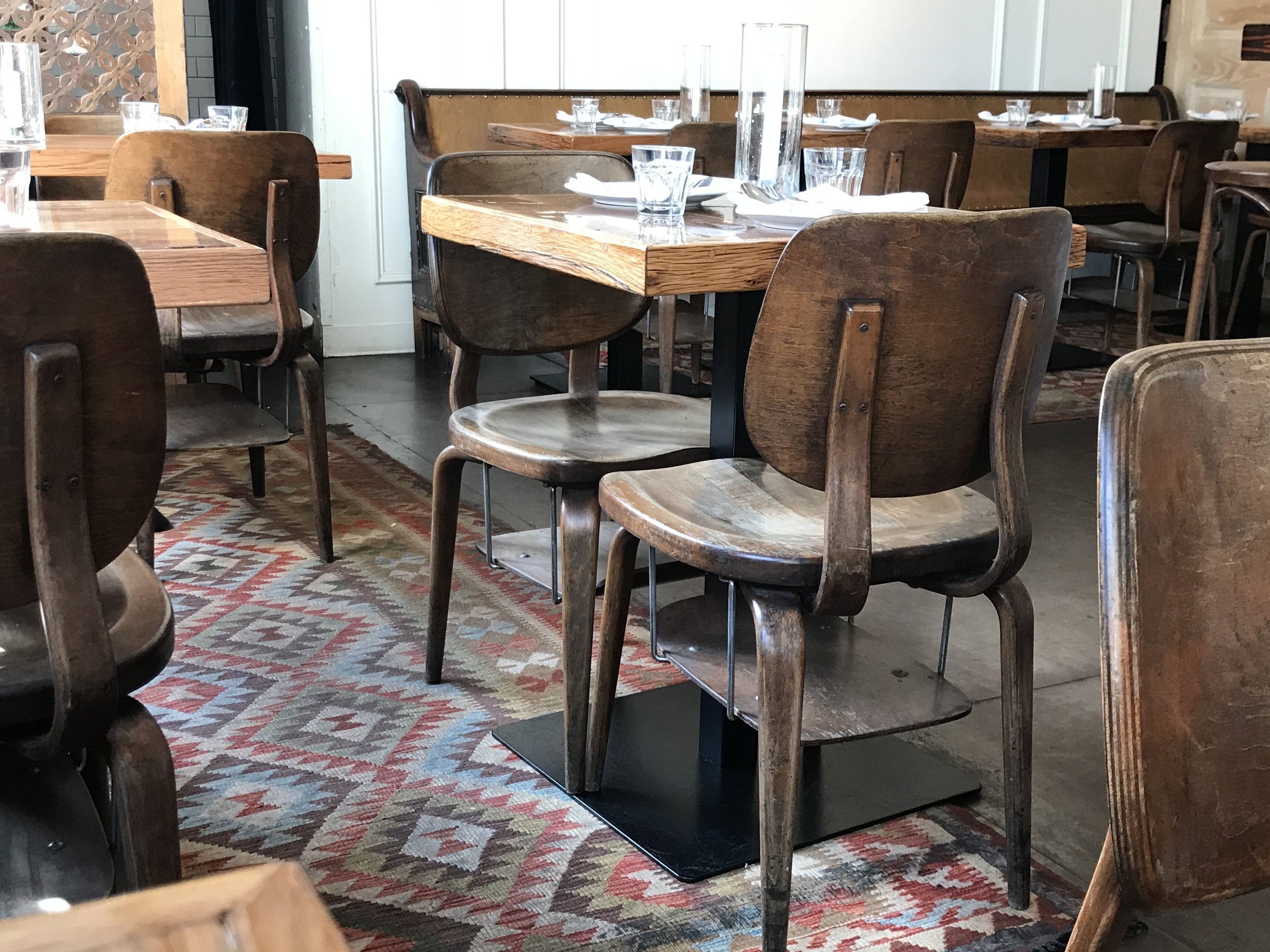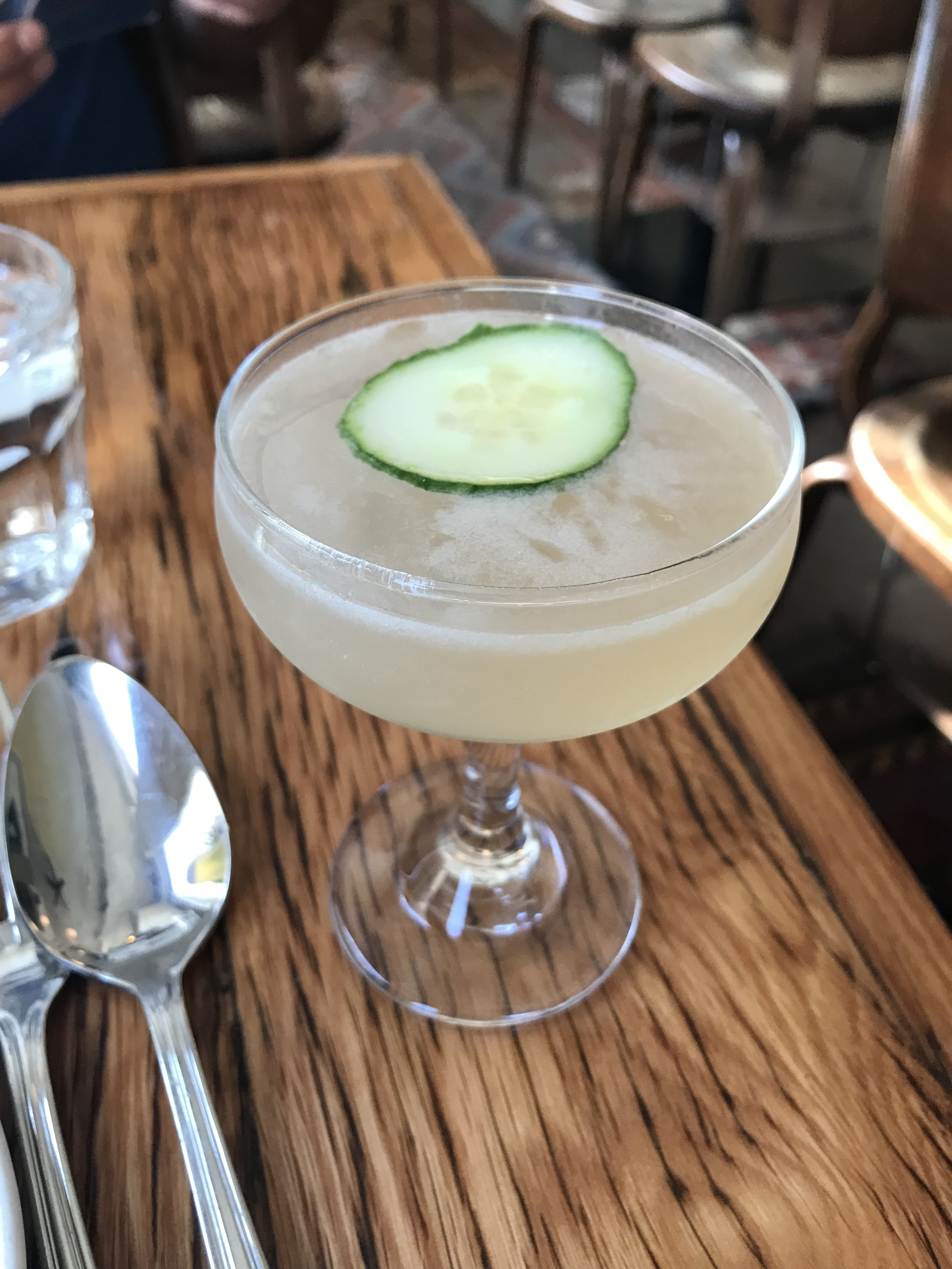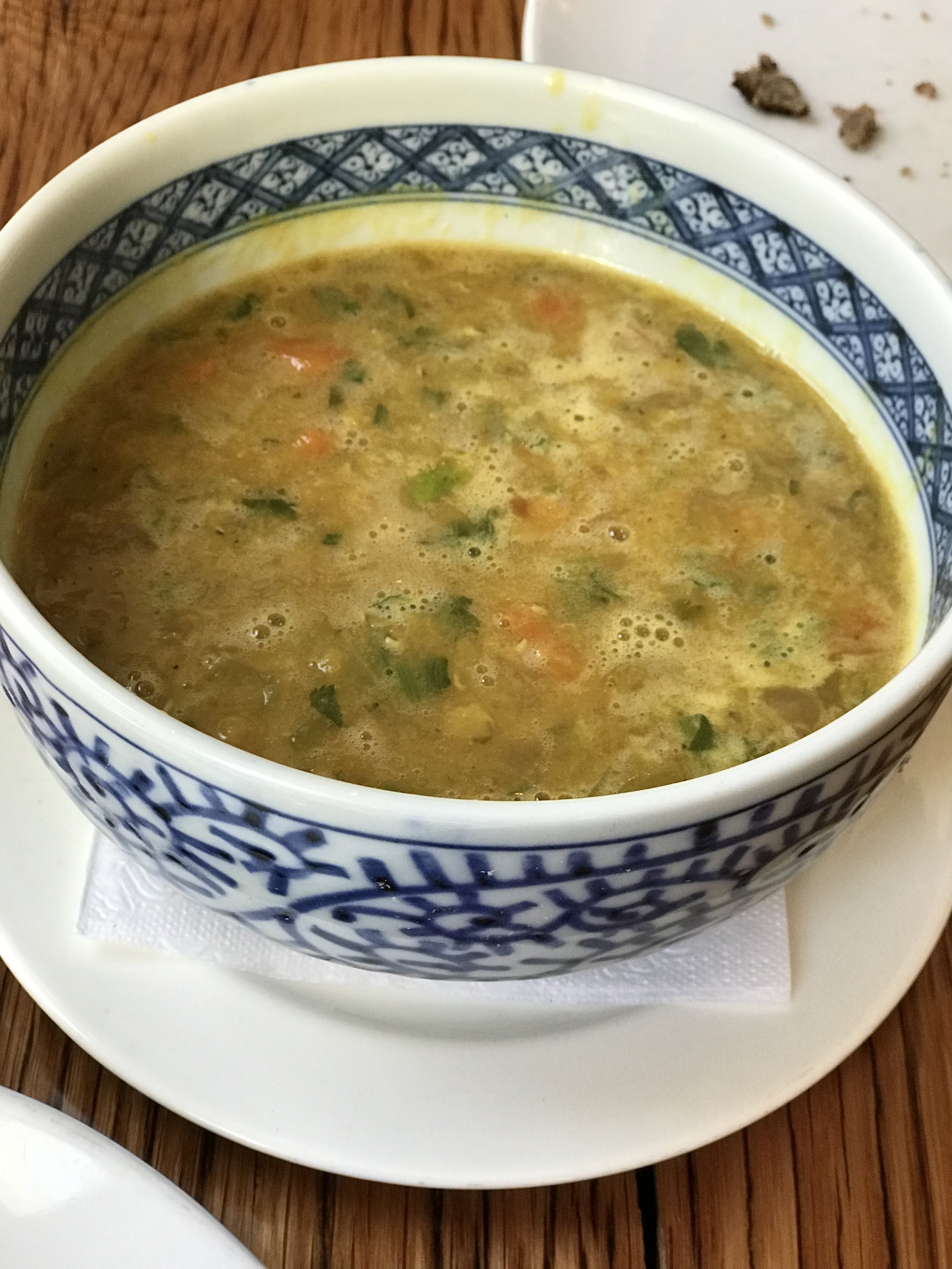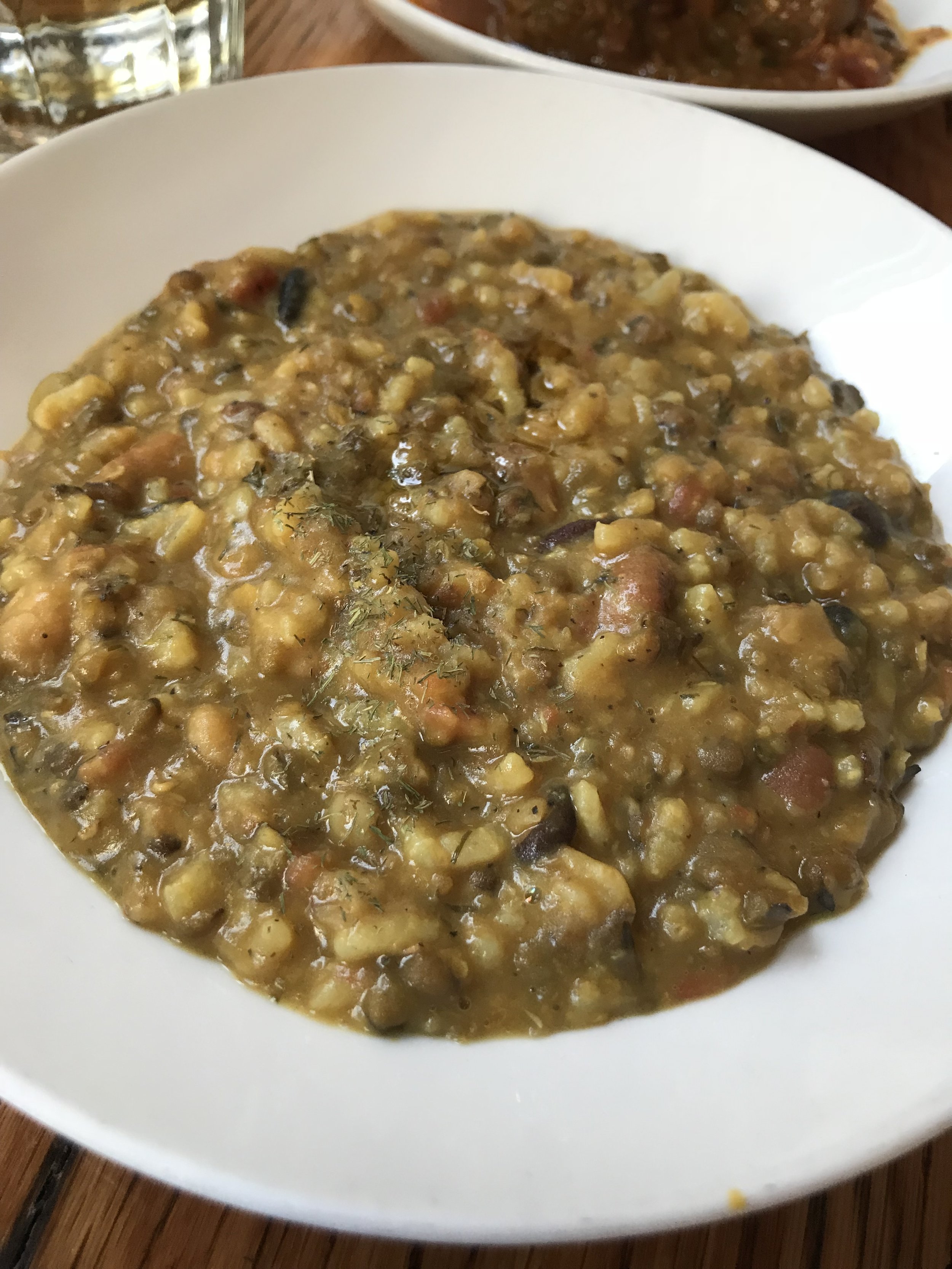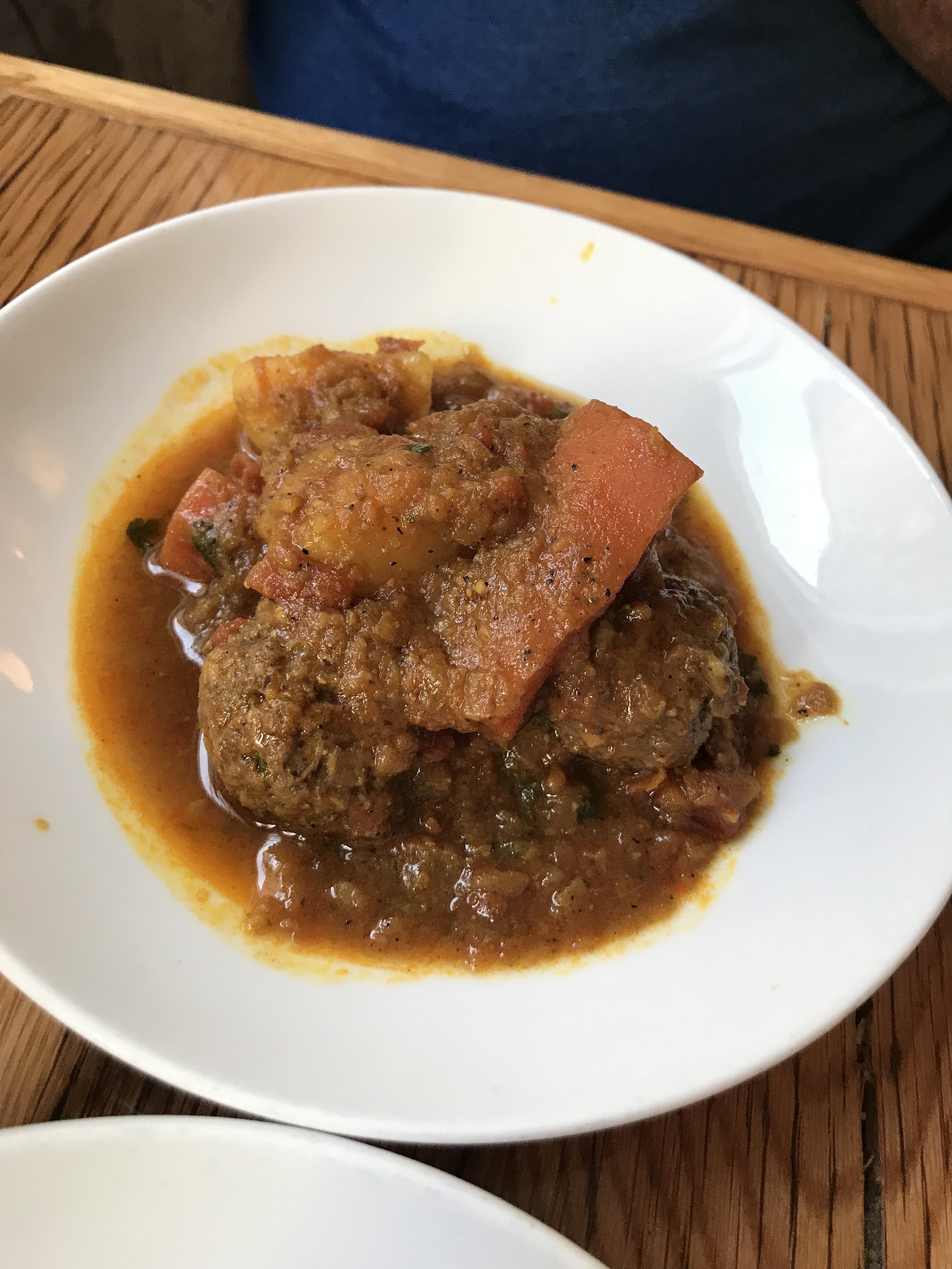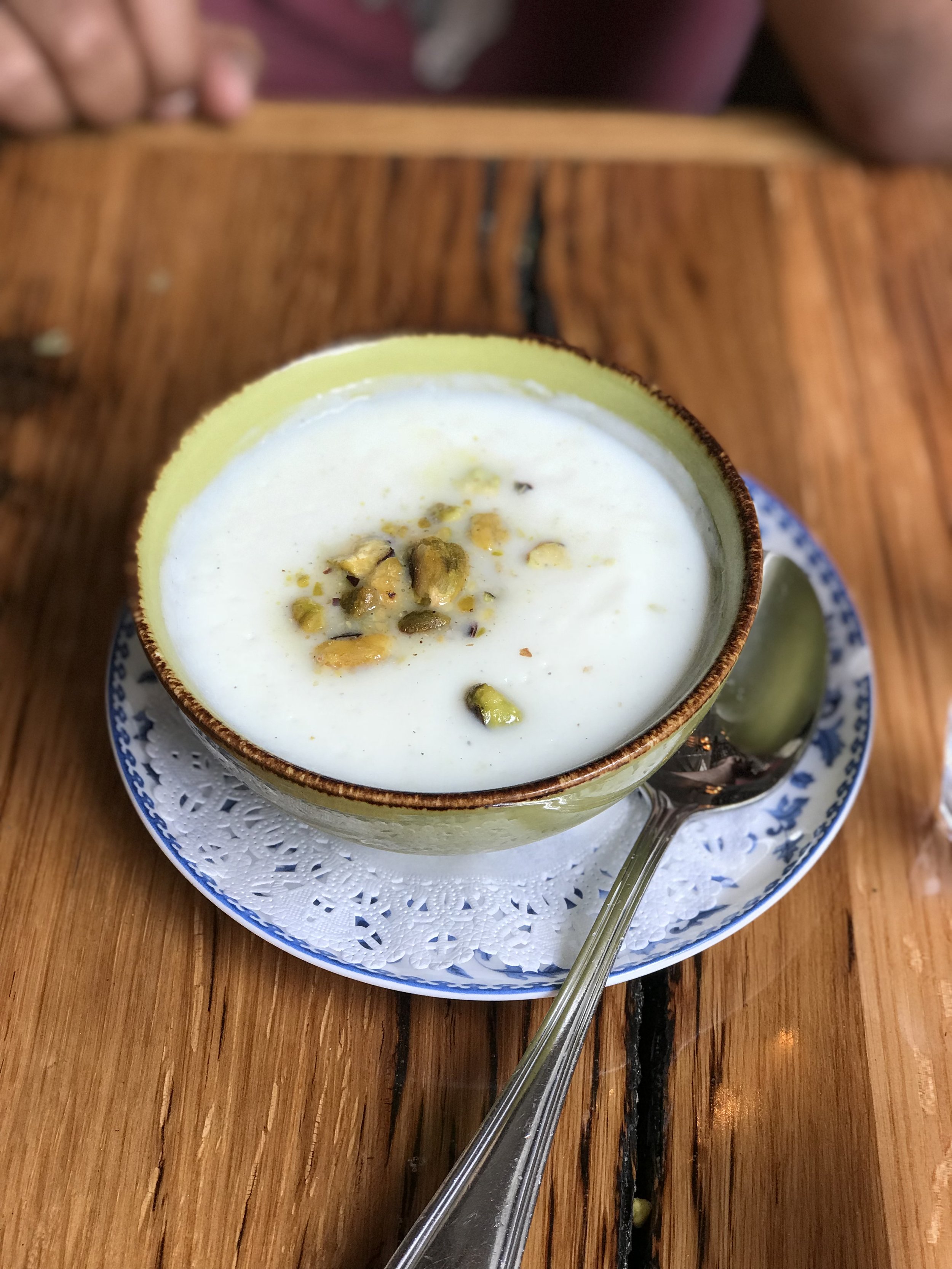Lapis, Washington, DC
Authentic Afghan food in the heart of DC.
Nestled on a bustling corner of the Adams Morgan neighborhood is a culinary embodiment of the American Dream. If that line comes off as a bit too saccharine, add some cardamom and almonds, and you'll just about have it.
Lapis is a family-run Afghan restaurant, and it feels that way the second you enter. It's a cozy and inviting space. Walls are either bare with distressed paint suggesting the passage of time, or they are covered with beautiful framed tapestries. In spots, the walls host family portraits. The family has endeavored to give the restaurant the feel of their family home in Kabul, and the effect is one of warmth and easy comfort. Wooden chairs have bookshelves beneath their seats, adding a tinge of nostalgia. If it feels as though you're back in school, it's because -- in a way -- you are.
Lapis owner Omar Popal describes Adams Morgan as “an ethnic food destination," which is a fair description today. You'll pass restaurant after restaurant as you walk through the neighborhood, and your choices are pretty far-ranging. If you're lucky enough to be in DC when the embassies open their doors to offer samples of their native cuisines, you'll witness DC's celebration of diverse food cultures. When the Popal family immigrated to escape war in 1987, however, finding the foods of home was nearly impossible. Even when the kebab restaurants began to appear in the 1990s, Omar tells me, they were often flavored with Indian or Pakastani influences. Lapis offers a glimpse not only of authentic Afghan cuisine, but also of an Afghan culture at risk of being forgotten.
Shamim Popal is the head chef and family matriarch, and as a result, the menu presents the family's collective food story. And it is simply a delicious story.
Photo courtesy of @lapisdc on Instagram; used with permission.
Our dinner started with drinks, including the Viceroy cocktail pictured here. It's sparkling wine and a gin that's infused with basil and cucumber, along with some elderflower and grapefruit. It was the perfect refresher on a warm spring day.
For starters, we ordered nask soup and shamee kebabs. The minced meat kebabs were soft and warm, and just enough to whet the appetite. The nask -- a soup of yellow lentils, carrots, and celery, pictured above to the right -- was perfectly seasoned and hearty. The nostalgia hinted at by those school desk chairs peeks its head around the corner as you slurp your soup. Even if this is your first time enjoying Afghan food (as it was for me), this soup will tickle familiar taste buds. It elicited memories of family meals and of mom's secret ingredient. It had the power to revive the spirit and restore the soul the way that a visit home can, wherever home may be for you. This soup was how I knew we were in for an amazing meal, and not just because it tasted good. More significantly, it invited me to discover something new, and then rewarded me with a sense of homecoming.
Our entrees were two different stews: shola (on the left above), and kofta (on the right). The shola is an earthy, thick bean soup, while the kofta is a filling beef dish with carrots and potatoes. We were tempted by the bolani, a stuffed flatbread, when we watched it wind its way through the restaurant to another table, so we tried that, too. The bread's warm, savory filling against the cool yogurt was simply delightful.
We were only in DC for a long weekend, and when we finished our dinner at Lapis, we counted ourselves fortunate to have had a meal there.
And then there was brunch.
We couldn't stay away for long at all! We returned to Lapis for a weekend brunch, which was one of the best brunches I've ever had. The cheekiness of the menu (with categories named "Eggistan," "Saladistan," and "Sweetistan") and the bustling crowd set a lively, casual tone, and the food was every bit as spectacular as dinner had been. We kicked things off with a bloody Mary and a sheer chai, a delicious concoction that -- were I in charge of such things -- would find its rightful place on the menu under the heading "Cardamomistan."
The brunch entrees combine Afghan foods with traditional American brunch staples. The karayee with beef, above, features eggs over a savory tomato and potato hash. It was vibrant and hearty. The lamb benedict, below, had perfect poached eggs and savory lamb with just a hint of citrus. The hollandaise was subtle, and it was all tied together by the hashbrowns at the bottom.
We wrapped up our meals with some sweets. The firnee, below and to the left, had the smooth consistency of yogurt, and the heavenly sweetness of cardamom. The warm semolina halwa, to the right, wasn't overly sweet: its combination of cardamom and almonds was the perfect way to punctuate a filling, soulful meal.
Mrs. Popal's son Omar explains that the menu hasn't been Americanized at all, but that it instead represents the way his grandmother ran her kitchen back in Kabul. "Eating at Lapis is like going back into time," he writes, "where you get a slice of what life was like in the 70s (and before) when Kabul was a modern city with mini skirts and Elvis on the radio. We are helping keep that authentic tradition alive [by] introducing our guests to what proper Afghan cooking is all about." The Popals celebrate Afghan cooking and culture even as they embrace their new home in the heart of the nation's capital. This is the lesson you learn while sitting in those old schoolhouse desk chairs: the metaphor of America as a great melting pot may be outdated, but the use of food and cooking metaphors to describe the American experiment is both timeless and apt. Perhaps the great American melting pot isn't a singular vessel into which we all must force ourselves to fit. Perhaps it is instead the tool that each of us might use to discover shared tastes and common favorites, one which lets us nourish each other.
Lapis Bistro
1847 Columbia Road NW
Washington, DC


